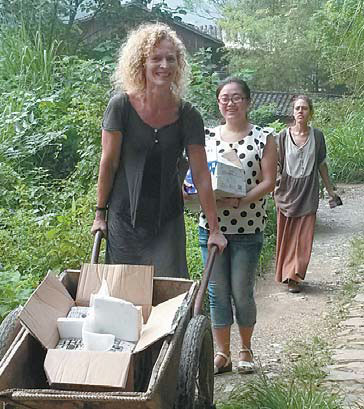China, Holland linked for centuries by ceramics trade
Updated: 2015-08-14 08:53
By Peng Yining(China Daily Africa)
|
|||||||||||
Chinese porcelain sparked industry in Europe, and exchanges continue today
During Susanne Silvertant's first trip to China in 2014, the 54-year-old Dutch ceramic artist made a set of porcelain vessels with the help of a Chinese monk.
She says the monk was a painter and that they met in Jingdezhen, Jiangxi province, where she was working as an artist in residence at the Jingdezhen Sanbao International Ceramic Art Village Museum.
|
From left: Anneke Mol, a painter with Royal Delft, says she has been to China and was impressed by the work of local ceramic artists; Li Yuqing, tourism manager at Royal Delft, says Delftware is no longer an imitation of Chinese porcelain but has its own style and special techniques; and Dutch ceramic artist Olav Slingerland works with a Chinese colleague in Wenzhou. Peng Yining / China Daily |
Silvertant agreed to let the monk paint her work, despite the language barrier. "We could only communicate with simple English words, like me telling him the theme of this object was ocean. He painted fishes whose color and shape fit the vessel perfectly. Or I would say that an object's theme was flowers, so he painted a rose garden," she says.
"I have been working with ceramics for more than 40 years and he understands porcelain. We comprehend each other well. We can communicate through art."
Silvertant brought molds of garden materials, rosebuds and leaves from the Netherlands to Jingdezhen. Casts of these and of Chinese food, peanuts and peppers were incorporated into her ceramic vessels. She later named the set of vessels Connection.
"I didn't know much about China before I went there, because it is far away and so different," says Silvertant. "But I was thinking of making a connection between these two countries and that ceramics could be a bridge."
In addition to the geographical distance there is also a culture gap between China and the Netherlands. But there is one link: China's famous blue and white porcelain and the blue and white pottery found in Dutch Delftware, as well as exchanges between artists from both nations. Dutch industrial designer and ceramic artist Olav Slingerland experienced culture shock during his first visit in China in 2013.
"I found people would ask me questions that we would never ask in Holland, such as how much is your house?" he says. "And I didn't get used to the food there, too many bones, heads and feet."
Although he didn't like the food, Slingerland was inspired by the Chinese dining table and made a series of four large circular discs each consisting of 32 interlocking segments.
"I was impressed, when eating with local people at a round table, by the closeness that people have with their families. When I was young, people still ate dinner at round tables, but now people in Holland eat alone in front of the television or laptop. People in Holland here are very independent. Sometimes too independent," he says.
"Through my ceramic work I wanted to combine the big round shape and small segments, the collectivism and individualism, China and Holland, the East and the West."
Ceramics was the first bridge connecting the two countries. In the 17th century, the Dutch East India Company sailed to China to obtain Chine de Commande, Chinese porcelain with either a European shape or Western decorations. As the Europeans searched for Jingdezhen's porcelain, which had blue decorations on a white background, potters in Delft started to imitate it. They produced ceramics by firing earthenware then covering it with tin glazing. After a second firing, lead produced a transparent layer over the shiny blue color on an opaque white background. The imitation was later developed into Delftware, which is still the pillar industry in the city, and has been seen as a symbol of Holland.
|
Dutch ceramic artist Susanne Silvertant in Jingdezhen, Jiangxi province. Provided to China Daily |
The exhibition at Museum Prinsenhof Delft includes vases in the Chinese style but has images of Western gods. A typical Delftware plate painted with images refers to a story about the 11th century Chinese statesman Sima Guang.
"The Chinese influence was very strong, but Dutch potters developed their own style," says Suzanne Kluver, curator of decorative arts at the museum.
Many shops in the Netherlands offer a range of blue and white pottery pieces that are painted with windmills, cows and tulip flowers.
Kluver says 22.5 million euros ($24.67 million) is spent on Delftware around the world every year and 30 percent of that expenditure is in Europe.
To continue the exchange with China, the museum also has collections from modern Chinese ceramic artists. In 2014, after Chinese President Xi Jinping paid a state visit to the Netherlands, the museum worked with Jingdezhen Imperial Porcelain Museum and Dongguan Yuan Chonghuan Memorial Park to mount a joint exhibition of ceramics called The Blue Revolution: A Witness of the Maritime Porcelain Route.
"The ancient maritime Silk Road connected Delft with Jingdezhen, and the exchange of ceramics is still going on between the two cities," says Kluver.
In 2008, Delft and Jingdezhen became sister cities because of their history with blue and white porcelain.
"Our mayor has been to Jingdezhen and every year Delft participates in the international ceramic fair in Jingdezhen. We also send our painters on exchanges to China," says Li Yuqing, tourism manager at the Royal Delft, the only remaining factory of more than 30 earthenware factories that were established in Delft in the 17th century.
"China is the birthplace of the blue and white porcelain from which we developed Delftware. As a person who was born and raised in China, I feel proud," says Li, who came to the Netherlands in 2000 and has been working for the Royal Delft since then.
She says the factory has more than 130,000 visitors every year and about 6,000 are tourists from China.
After hundreds of years of development, she says Delftware is no longer an imitation of Chinese porcelain but has its own style and special techniques.
"But the connection between the two products still exists. I believe that when Chinese tourists see an ancient Chinese skill has had such successful development in Europe, that they will feel proud as well."
In the factory's workshop, potters move the wheels to polish pots by kicking the wooden interlock wheel under their feet, a technology that was first invented in China and is still used by Chinese potters.
Anneke Mol, a painter who has been working in the factory for more than 40 years, says she has been to China and was impressed by the work of local ceramic artists.
"I saw beautiful and giant vases made with extraordinary skill," she says. "The ceramic arts are what inspired me to go to China."
Terra Delft, a contemporary ceramics gallery founded in 1986, has been working with a ceramics institution in Jingdezhen for three years and sending Dutch artists to China for an artist residency every year.
"We have sent 11 artists to Jingdezhen. Some of them had never been to China before, or even been out of Europe," says Joke Doedens, manager of the gallery. "China is the birthplace of ceramics. We hope their experience in China can help them to open a new door in their career."
Doedens says besides learning ceramic skills and traditions, she believes that Chinese culture in general and living with Chinese people could also inspire artists from Europe, which is an important reason that the ceramic exchange between China and the Netherlands should continue hundreds of years after the export and imitation of blue and white porcelain.
"I worked in Jingdezhen for several weeks and that was the most challenging experience in my creative career, but also a memorable and inspiring one," says Yuk Kan Yeung, a 55-year-old Hong Kong-born artist who came to the Netherlands in 1987. "Ceramics is part of Chinese culture and hence it is part of my identity. It was a root-finding journey in Jingdezhen."
pengyining@chinadaily.com.cn
(China Daily Africa Weekly 08/14/2015 page8)
Today's Top News
China probes into Tianjin blasts, experts focus on chemicals
Yuan stabilizes after central bank reassures markets
PBOC promises effective steps for yuan stability
British foreign secretary in Beijing to prepare for President Xi's visit
Greece announces deadlines for port, railway privatization tenders
Turkey's early elections 'decidedly possible': PM
Death toll rises to 50, military sends chemical specialists to blast site
12 firefighters among 44 killed in explosions
Hot Topics
Lunar probe , China growth forecasts, Emission rules get tougher, China seen through 'colored lens', International board,
Editor's Picks
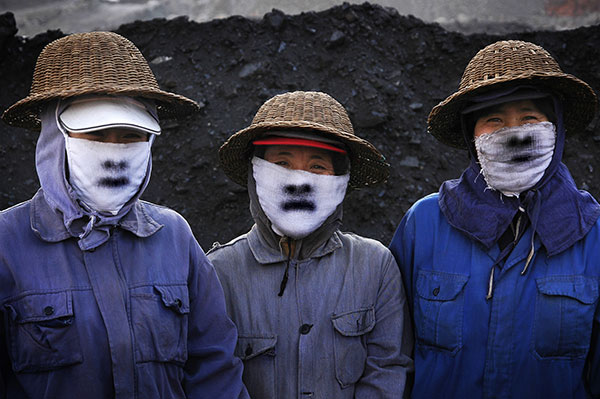
|
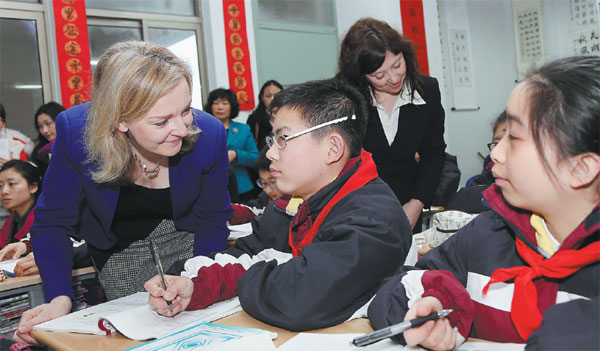
|
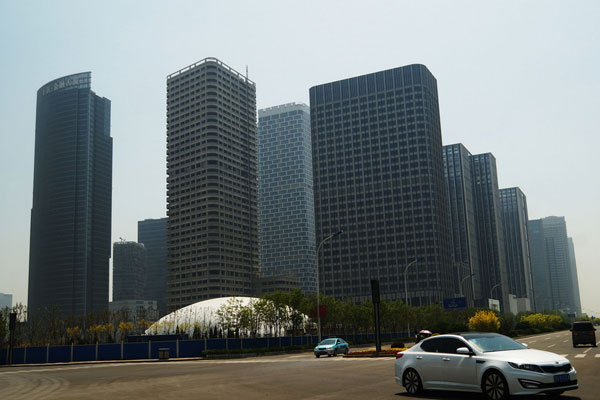
|

|

|
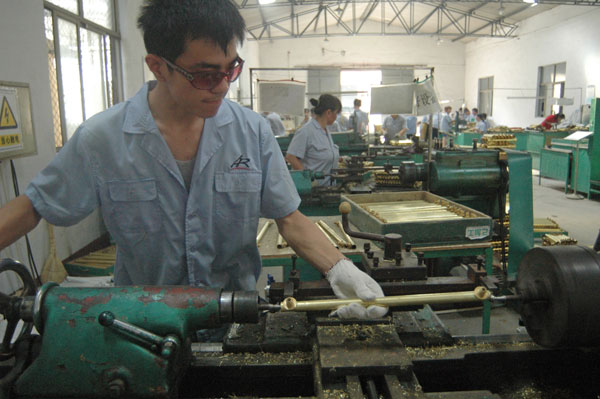
|

